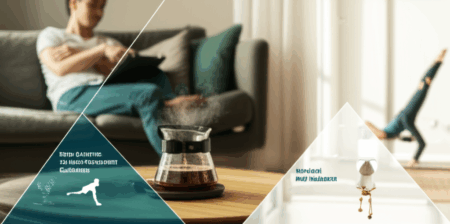In an increasingly demanding world, mental health challenges such as anxiety and depression are widespread. While various therapeutic approaches exist, one of the most accessible and scientifically supported methods for boosting mental well-being lies in something surprisingly simple: physical activity. Regular exercise doesn’t just sculpt the body; it profoundly influences brain chemistry, mood regulation, and overall emotional resilience, offering a natural and potent antidote to the stresses of modern life.

The Science Behind Exercise and Mental Health Benefits
The connection between physical activity and improved mental health is well-documented, with research consistently showing that those who exercise regularly experience better emotional well-being and lower rates of mental illness. But how exactly does moving your body translate into a healthier mind?
Chemical Changes in the Brain
One of the primary mechanisms involves the alteration of brain chemicals. Physical activity stimulates the production and release of “feel-good” neurotransmitters like endorphins, serotonin, and norepinephrine. Endorphins, often associated with a “runner’s high,” can reduce the perception of pain and induce feelings of happiness. Serotonin and norepinephrine play crucial roles in mood regulation, and increased levels are linked to improved mood and reduced symptoms of depression and anxiety.
Stress Reduction and Improved Sleep
Exercise acts as a potent stress reliever. It helps the body manage the physiological “fight-or-flight” response, reducing stress hormones and promoting relaxation by decreasing skeletal muscle tension. Furthermore, regular physical activity significantly improves sleep quality, which is intrinsically linked to mood management and overall mental health.
Enhanced Cognitive Function and Self-Esteem
Beyond mood, exercise can sharpen memory and thinking, stimulating the growth of new brain cells and helping to prevent age-related cognitive decline. Achieving fitness goals, no matter how small, can also significantly boost self-confidence and self-esteem. This sense of accomplishment, coupled with improvements in physical appearance, contributes to a more positive self-image and outlook on life.

Types of Physical Activity for Mental Well-being
The good news is that you don’t need to be an elite athlete to reap the mental health benefits of exercise. Even modest amounts of physical activity can make a significant difference.
Aerobic Exercises
Activities that get your heart pumping and increase your breathing rate are particularly effective. These include:
- Brisk Walking: A readily accessible option, even a 10-15 minute brisk walk can clear your mind and boost energy.
- Jogging/Running: Studies suggest running can be as effective as antidepressants for some individuals with depression and anxiety.
- Swimming: A full-body workout that can be very calming.
- Cycling: Offers both cardiovascular benefits and the opportunity to explore outdoors.
- Dancing: A fun and expressive way to engage in moderate-intensity activity.
Strength Training
Using resistance (weights or bodyweight) to build muscle strength and endurance can also be very beneficial. It can boost self-esteem, improve body image, and increase feelings of accomplishment.
Mind-Body Practices
Activities that combine physical movement with mindfulness and controlled breathing can promote relaxation and focus:
- Yoga: Has been shown to increase neurotransmitters like GABA, which may improve mood, and can significantly reduce anxiety and depression symptoms.
- Tai Chi: Another Eastern tradition that combines gentle movements with deep breathing, contributing to relaxation and stress reduction.
- Pilates: Focuses on core strength, flexibility, and precise movements, aiding in mind-body connection.

Practical Tips for Incorporating Physical Activity
Starting an exercise routine, especially when struggling with low motivation, can feel daunting. However, integrating physical activity into your daily life can be simpler than you think.
Start Small and Build Gradually
You don’t need to commit to intense workouts immediately. Begin with manageable goals, such as 5-10 minutes of activity daily, and gradually increase the duration and intensity. Consistency is more important than intensity, especially in the beginning.
Choose Activities You Enjoy
Find activities that you genuinely like, or have enjoyed in the past. This significantly increases the likelihood of adherence. Whether it’s dancing, gardening, playing a sport, or simply walking, make it enjoyable.
Make It a Habit
Schedule your physical activity like any other important appointment. Incorporate movement into your daily routine by taking the stairs, walking or cycling instead of driving, or even doing active chores like gardening or vacuuming.
Consider the Outdoors
Exercising outdoors can provide additional mental health benefits, with people reporting higher levels of vitality, enthusiasm, and self-esteem, and lower levels of tension and fatigue. Nature provides a calming environment that enhances the effects of physical activity.
Embrace Social Connection
Exercising with others can offer social support and reduce feelings of loneliness. Joining a group fitness class, a walking group, or simply exercising with friends or family can add an extra layer of motivation and enjoyment.
Listen to Your Body and Rest
While regular activity is key, it’s also important to know when to rest. Adequate sleep and recovery are crucial for both physical and mental well-being.

When to Seek Professional Guidance
While physical activity is a powerful tool for mental health, it is not a substitute for professional treatment, especially for severe mental health conditions. Research indicates that exercise is highly effective when used as a complementary tool alongside therapy and medication. If you are experiencing persistent symptoms of depression, anxiety, or other mental health concerns, consult with a healthcare professional, such as a GP or an accredited exercise physiologist, before starting a new exercise plan. They can help you establish realistic goals and ensure your plan is safe and effective for your individual needs.
By intentionally integrating physical activity into your life, you can harness its profound benefits to cultivate a healthier mind, reduce stress, improve mood, and enhance your overall quality of life.







